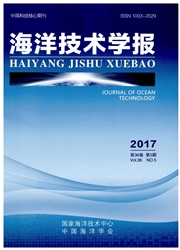

 中文摘要:
中文摘要:
浮式钻井生产储卸油装置(FDPSO)在外输作业中存在和穿梭油轮发生碰撞的风险,目前国内外的研究多集中在船体的结构强度和动力响应方面,文中则对FDPSO在外输作业中的碰撞概率做了定量研究。以南海一艘FDPSO为例,利用MOSES软件对其进行了3 h相对运动的时域模拟,得到FDPSO和穿梭油轮在漂移状态下过分纵荡运动的统计结果。两船之间的过分纵荡运动是导致FDPSO与穿梭油轮发生碰撞的主要原因。分析表明,FDPSO与穿梭油轮的纵荡最小值服从极值Ⅰ型分布。因此运用极值理论进行计算,得到FDPSO和穿梭油轮发生碰撞的概率。此外,进行了不同风浪组合情形下的模拟,研究了不同风浪流角度对过分纵荡运动发生概率的影响。研究表明,风浪流的角度对于漂移碰撞概率具有重要影响,碰撞概率随风浪流角度的增大而减小。
 英文摘要:
英文摘要:
The collision between the Floating Drilling Production Storage and Offloading(FDPSO) system and shuttle tanker is a main risk in tandem offloading operations. Currently, most researches across the world concentrate on the hull structural strength and dynamic response, while a quantitative study is conducted in this paper focusing on the probability of FDPSO-tanker collision in tandem offloading operations. Taking an FDPSO in the South China Sea for example, a 3-hour time-domain simulation of the relative motion was carried out with MOSES software to obtain the statistical results of excessive surging events of the FDPSO and shuttle tankers in drift movements. Excessive surging events are the main cause of FDPSO-tanker collision, and the analysis shows that the minimum of excessive surging is an extreme-I distribution variable. Therefore, the extreme value theory was applied to calculate the probability of FDPSO-tanker collision. In addition, this paper analyzes the effects of different combinations of wind, wave and current on the probability of excessive surging events. The study indicates that the direction of wind, wave and current has a significant impact on the probability of FDPSO-tanker collision,and the probability lowers with increasing direction of wind, wave and current.
 同期刊论文项目
同期刊论文项目
 同项目期刊论文
同项目期刊论文
 期刊信息
期刊信息
